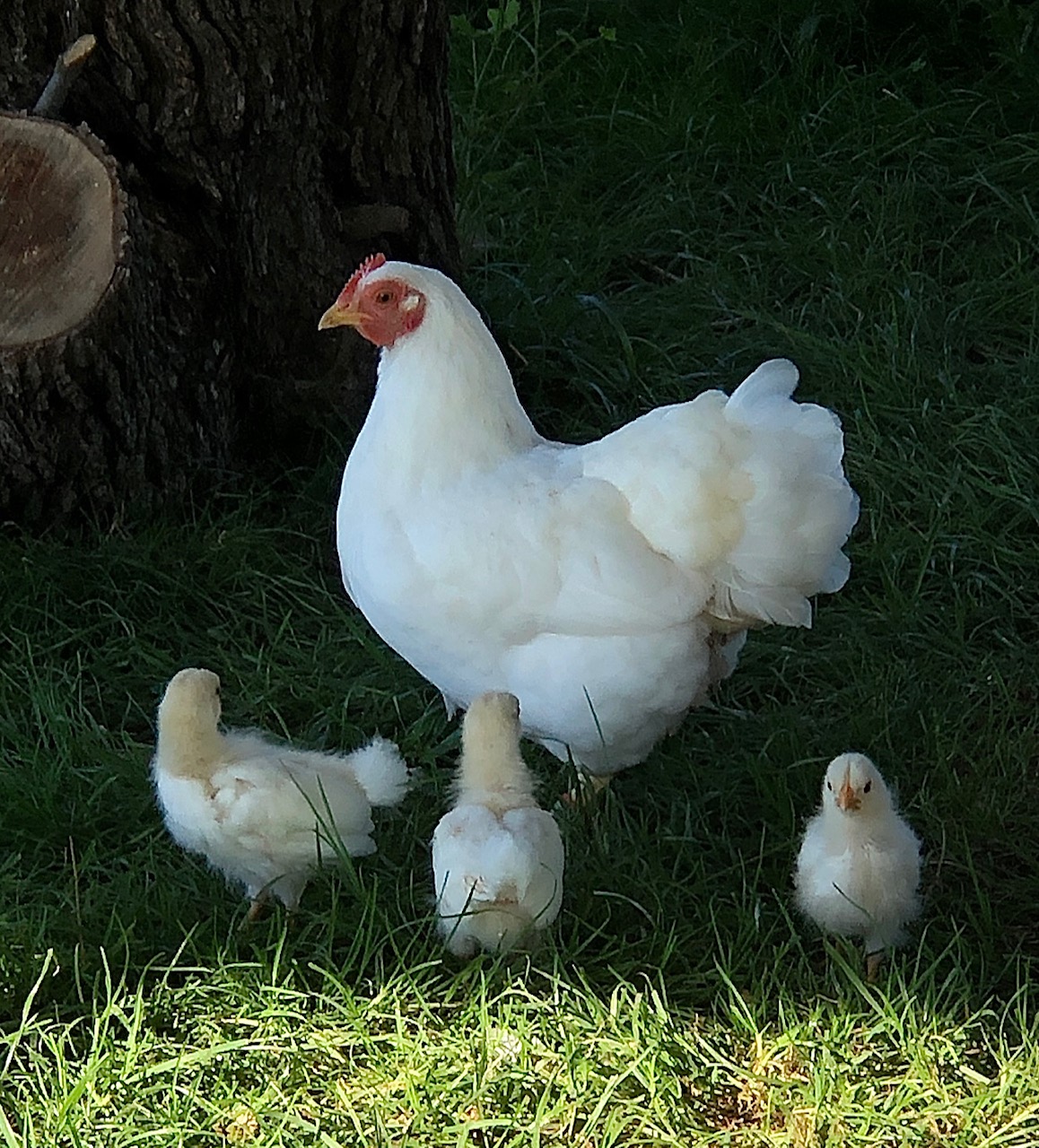Part 2 of 2 in a series of articles about identifying healthy chicks by Clayton Botkin.
Rump, Vent and Cushion
Ensure the birds are clean from buildup of droppings or dirt accumulations around the vent. This tells you a lot about the conditions the babies were kept and reared in. Any indication of blood could be a case of coccidiosis, a good reason not to buy the birds. This is a very large feat to overcome for a new person entering the hobby and will often lead to disappointment in a short time frame. It is also a very good practice to inspect the droppings in the pen for any sign of blood to avoid the coccidiosis issue.
Tail
Most breeds exhibit their proper tail carriage young in age. Try to be sure of what you are buying and what they should look like. If the tail is carried pointed down and droopy, it may be an indicator of poor health and cause for concern.
Feet, Legs and Toes
Ensure the correct number of toes for your breed and conformation. Often, and especially with five-toed breeds, you can tell how the toes are arranged, if they are desirable and correct at a very young age. With Faverolles, they can immediately be culled for toe number and shortly after for toe configuration. Try to avoid getting birds with the incorrect number of toes, or duck footed at all costs, as these issues are very hard to get out of your flock. Also, be on the lookout for knock-knees or any babies that do not seem to walk normally. The seller is likely trying to merely dump their culls if you see this.
 Overall Body and Condition
Overall Body and Condition
Look for chicks that are lively and “bouncy”. They will usually stand out. Avoid chicks that are “droopy” with low-hanging wings, low carried heads, and tails, or unusually inactive chicks. Of course, all chicks will be tired at some points, but observe potential purchases for a few minutes before you make your deal to see if they ever wake-up.
A Backgrounder on Coccidiosis for Identifying Healthy Chicks
Coccidiosis is a protozoan that lives in the gut of many animals. In chicks, it is a common cause of mortality. The protozoan can accumulate above normal levels and be detrimental to the health of the chick by destroying the microvillus that lines the outside of the villi of the birds’ intestinal wall. Villi are finger-like projections that protrude out from the wall of the intestine; they are further extended with another set of finger-like projections along their individual walls as well. These are the microvilli. Remember, the primary function of both large and small intestine is absorption of nutrients. The more surfaces exposed to the lumen, or inside of the intestine, the more absporption can occur. Both villi and microvilli are lined internally with capillaries. Capillaries carry blood near the membranes of the intestine, which are normally protected, but the extreme protozoan damage can expose these capillaries, causing blood to escape into the
intestine itself. This blood passes through the remainder of the digestive tract and is passed in the feces. Unfortunately, death can come about if the membrane cannot regenerate fast enough, or completely enough to enable the natural absorption of nutrients to occur again. If caught early enough however, it can be treated easily and quickly.
Final Thoughts on Identifying Healthy Chicks
I would encourage all potential purchasers of chicks to contact the breeder and ask many questions. The breeder should be able to tell you the lineage of the birds, any particulars about the breed, such as unique traits, weak periods in the growth of young and potential breeding techniques. Be wary of breeders that cannot provide you this information as they may be just trying to make the sale and not worried about how you do once you get them home. Most serious breeders will enjoy reveling in your consequent success with a breed and are not concerned about the individual sale, but the betterment of the breed and furthering the enjoyment of the hobby. I like to think most of us follow this path, but not all do and that is my reason for writing this article. It is of the utmost importance to perpetuate this great hobby that we all do our dealings, in a fair and honest manner, and I would like to encourage everyone to follow this path for the long-term survival of what we are doing and the great relationships we all develop amongst each other.
Want to read part one of this article? Click here.
By Clayton Botkin, APA General Licensed Judge #1234
